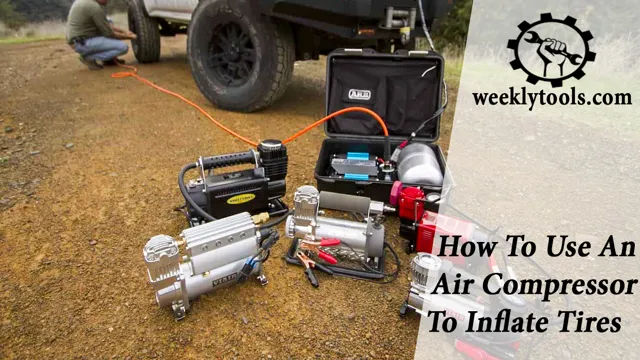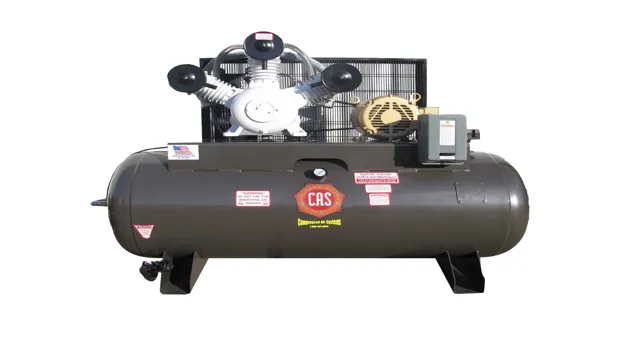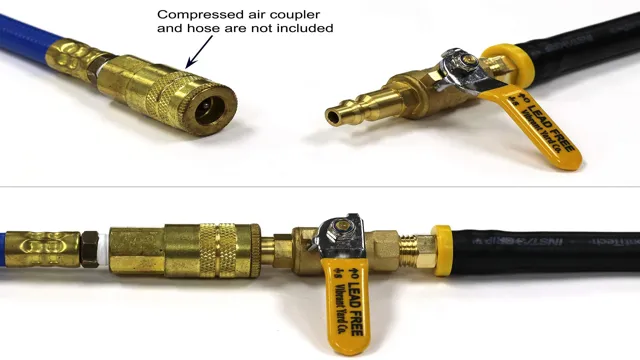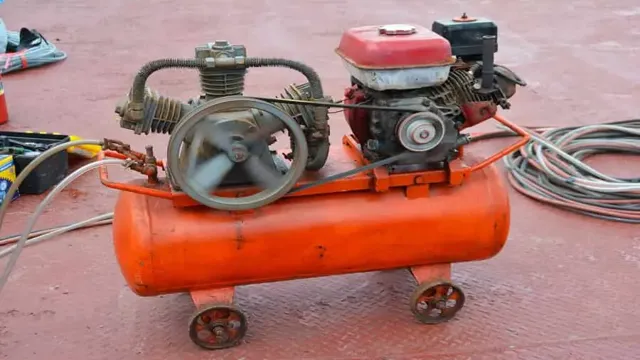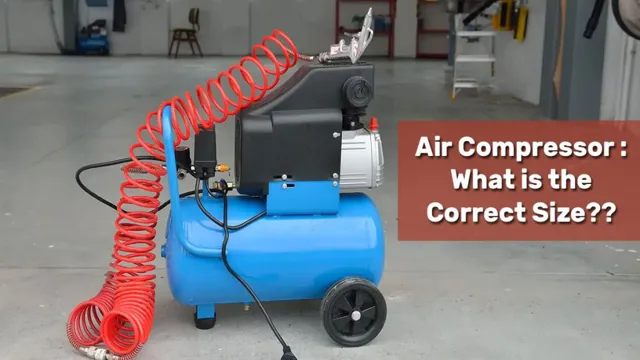How to Drain Water from Air Compressor: A Step-by-Step Guide
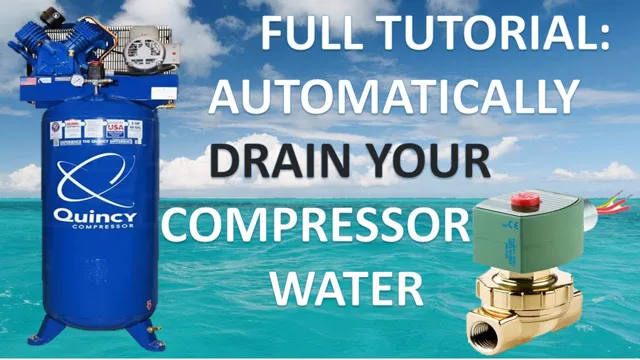
Air compressors are essential tools that help power a variety of machines in various settings. Whether you’re using them in your garage or in a factory, air compressors ensure that work gets done faster and more efficiently. However, like any other machine, air compressors need proper maintenance to function optimally.
One of the routine tasks that every air compressor owner should carry out is draining the water from the tank – a process that many people find daunting, especially if they’ve never done it before. But fear not, it’s easier than you might think! In this blog, we’ll show you how to drain water from air compressor tanks and keep your machine in top shape.
Why Drain Water from Air Compressor
If you’ve ever owned an air compressor, you should know how important it is to drain the water from it regularly. Air compressors produce moisture as a byproduct of compressing air, and if this moisture isn’t removed, it can cause corrosion and rust buildup inside the tank, which can lead to permanent damage and a decrease in the compressor’s efficiency. Not to mention, moisture buildup can also cause damage to tools and equipment that rely on clean, dry air.
Draining the water is easy and should be done after every use or at least once a month. Simply open the drain valve or remove the plug to release any moisture that has accumulated at the bottom of the tank. It’s a quick and easy step that can prolong the life of your air compressor and keep your tools in top condition.
So, next time you use your compressor, take a few extra seconds to drain the water, and you’ll be rewarded with a longer-lasting and more efficient machine!
Preventing Damage to Your Air Compressor Equipment
Draining the water from your air compressor is essential to prevent damage to your equipment. When you use your compressor, water vapor is condensed as the air cools down, leading to the accumulation of water inside the tank. If you fail to drain this water regularly, it can cause severe damage to the compressor, resulting in rust and corrosion.
In addition to damaging your equipment, the accumulated water can also lead to contamination of the compressed air, which can harm the machinery it’s used with. That’s why it’s important to drain the water from your compressor on a regular basis. By doing so, you’ll significantly increase the lifespan of your compressor and ensure that it works efficiently.
Remember, prevention is always better than cure when it comes to maintaining your air compressor!
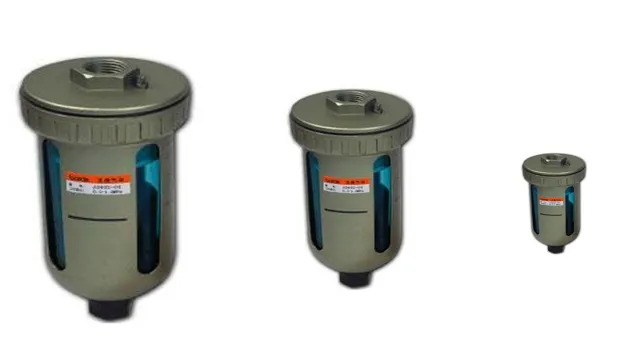
Improving Air Quality and Performance
Air compressors are an essential tool for various industries and processes that require pressurized air supply. However, one often overlooked aspect of air compressor maintenance is the draining of water from the system. Water can accumulate in the compressor tank due to the humidity and condensation created during the compression process.
This may cause several problems, including reduced air quality, corrosion of the tank and other components, and decreased system efficiency and performance. Moisture and contaminants in the tank can also damage the compressor’s internal components, leading to costly repairs or replacement. Regularly draining the water from the air compressor’s tank can prevent these issues and extend the equipment’s lifespan, promoting reliable operation and improved air quality.
So, it’s essential to incorporate a proper maintenance routine that includes regular draining of water from the air compressor for optimal performance and longevity.
Step-by-Step Guide to Draining Water from Air Compressor
If you own an air compressor, it’s essential to drain any accumulated water regularly. Otherwise, the water can harm your compressor’s internal parts and decrease its lifespan. Fortunately, it’s a simple process that you can easily do by following these steps.
First, turn off your compressor and unplug it from the power source. Next, locate the drain valve and place a bucket underneath it to catch the water. Then, slowly open the valve and let all the water drain out.
If your compressor has a tank gauge, ensure that the pressure gauge goes down to zero before you close the valve. Don’t forget to check the water level regularly to prevent any future issues. By following these simple steps, you’ll be able to keep your air compressor in good condition and prolong its usability.
Turn Off the Air Compressor
When it comes to draining the water from your air compressor, the first step is to turn off the machine. Make sure that the power switch is in the “off” position and that the machine is unplugged from the electrical outlet. Once the machine is turned off, locate the drain valve typically found at the bottom of the compressor tank.
To drain the water, connect a hose to the valve and place the other end of the hose in a bucket or drain. Slowly open the valve and allow the water to drain out completely. It is important to note that this process should be done regularly to prevent moisture buildup, which can lead to rust and other damage to your compressor.
By regularly draining the water, you can ensure that your air compressor runs smoothly and without any issues.
Release the Pressure in the Compressor Tank
If you own an air compressor, it’s important to regularly drain the water from the tank to prevent rust and corrosion, which can shorten its lifespan. Here’s a step-by-step guide to help you do just that. Begin by releasing the pressure in the compressor tank.
Turn off the power to the compressor and allow the unit to cool down. Once it’s safe to do so, pull the pressure relief valve to release the air pressure. Be sure to wear ear and eye protection during this step, as the sudden release of air can be quite loud.
Next, locate the drain valve at the bottom of the tank. This is usually a small brass or chrome valve with a lever or twist knob. Place a bucket or tray underneath the valve to catch the water.
Carefully open the valve, being sure to go slowly to avoid spraying water or debris. The water will begin to flow out of the tank and into the container you’ve placed beneath. Allow the water to drain completely, then close the drain valve and remove the container.
Finally, turn the compressor back on and let it run for a few minutes to allow any remaining moisture to evaporate from the tank. This will help prevent future buildup of rust and corrosion. By following these simple steps on a regular basis, you can help extend the life of your air compressor and keep it running smoothly.
Remember, prevention is key when it comes to maintaining your tools and equipment, and taking a few minutes to drain the water from your compressor is an easy way to protect your investment.
Locate Drain Valve and Attach Hose
When it comes to draining water from your air compressor, there are a few steps you need to follow. The first step is to locate the drain valve on your compressor. Look for a small valve at the bottom of the tank.
Once you’ve located it, grab a hose that fits snugly over the valve and attach it. Make sure the other end of the hose is pointed away from the compressor, and that there’s a drain or bucket to catch the water. When you’re ready to drain the water, turn off the compressor and open the drain valve.
The water will start to flow out of the tank and through the hose. Keep the valve open until all the water has drained out. Once you’ve drained the water, close the valve and remove the hose.
Don’t forget to check the air compressor’s manual for specific instructions on how to drain water. By following these simple steps, you can easily and safely drain the water from your air compressor and keep it running smoothly.
Open the Drain Valve and Drain the Water
When it comes to air compressors, proper maintenance is critical for keeping them running smoothly. One essential step in this process is draining any water that has accumulated in the tank, which can prevent rust and corrosion from damaging the machine in the long run. To begin, make sure your compressor is turned off and unplugged for safety.
Then, locate the drain valve on the bottom of the tank and attach a hose to it to direct the water flow. Slowly open the valve and let the water drain out. It’s important to note that the water is hot and you should be cautious.
Once the tank is completely drained, close the valve and remove the hose. With this easy step-by-step guide, you can keep your air compressor in top condition and extend its lifespan. Remember to do this regularly to prevent buildup and ensure your compressor works efficiently.
Tips for Maintaining Your Air Compressor
One of the essential maintenance tasks for keeping your air compressor running smoothly is draining the accumulated water. Over time, moisture can build up in the tank, which can lead to rust, corrosion, and damage to the compressor’s components. So, how to drain water from an air compressor? The first step is to turn off the compressor and unplug it from the power source.
Then, locate the drain valve at the bottom of the tank and attach a hose to it. Place the other end of the hose in a container or outside, away from any surfaces that could be damaged by the water. Finally, open the drain valve and let the water drain out completely.
Once the water has drained out, close the valve, remove the hose, and wipe down the tank’s interior to remove any remaining moisture. By performing this simple maintenance task regularly, you can extend the life of your compressor and ensure optimal performance.
Regular Maintenance Schedule
As an air compressor owner, regular maintenance is critical to the longevity of the compressor. A maintenance schedule should be established to ensure that the compressor functions properly. The first step is to check the oil level in the compressor regularly.
Next, the air filters should be cleaned or replaced as needed. Additionally, the compressor should be inspected for any signs of wear or damage, such as leaks in the hoses or cracks in the belts. Regularly cleaning the compressor and keeping it in a dry area can also benefit its lifespan.
Lastly, always refer to the manufacturer’s manual for specific maintenance guidelines. Proper maintenance can prevent costly repairs and ensure optimal performance.
Keep Air Filters Clean
Air compressor maintenance is crucial for its smooth and optimal operation. One easy yet important tip to maintain your air compressor is to keep the air filters clean. Dirty air filters can cause a decrease in airflow and increase the risk of engine failure.
It is recommended to clean the filter every three months, but it may need cleaning more frequently if you use your air compressor in a dusty or dirty environment. Before cleaning the filter, ensure that the compressor is turned off and unplugged. Remove the filter carefully, and use a soft brush or compressed air to remove any debris.
Make sure you replace the filter if it is damaged or worn out. By keeping your air compressor’s filter clean, you can extend its lifespan, minimize the risks of unexpected breakdowns, and improve its overall performance.
Conclusion
Congratulations, my dear friend, you have successfully learned how to drain water from your air compressor! Now your tools and machines won’t be hindered by pesky moisture, and you’ll be as efficient as can be. Remember, just like a refreshing glass of water, your air compressor needs proper maintenance and care to function at its best. May your compressor run dry and your projects run smoothly!”
FAQs
What is the importance of draining water from an air compressor?
Draining water from an air compressor is important as the water can damage the internal components of the compressor and result in decreased efficiency and performance. It also helps to prevent corrosion of the tank and extend the lifespan of the compressor.
How often should you drain water from an air compressor?
The frequency of draining water from an air compressor depends on the usage and humidity. Generally, it is recommended to drain the tank after every use or at least once a month to prevent the accumulation of water.
What is the process to drain water from an air compressor?
The process to drain water from an air compressor involves turning off the compressor and releasing the air pressure from the tank. Locate the drain valve at the bottom of the tank and open it to allow the water to drain out. Once the water has drained, close the valve and refill the compressor with the required amount of oil and air.
Can you drain water from an air compressor while it is running?
No, it is not safe to drain water from an air compressor while it is running. Always turn off the compressor and release the air pressure before draining water from the tank.
What are the signs of water accumulation in an air compressor?
The signs of water accumulation in an air compressor include decreased performance and efficiency, rust or corrosion on the tank or components, and water droplets or moisture coming out of the air hose.
Can you prevent water accumulation in an air compressor?
Yes, you can prevent water accumulation in an air compressor by using a moisture filter, regulating the air pressure, and draining the tank regularly.
What are the consequences of not draining water from an air compressor?
If water is not drained from an air compressor, it can result in decreased efficiency, damage to the internal components, and corrosion of the tank. It can also lead to the growth of bacteria and mold, which can cause health issues.

